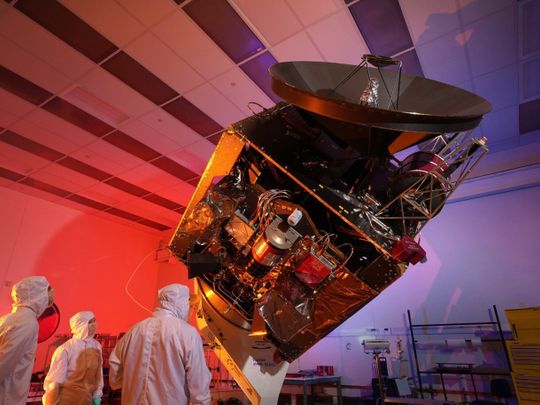
On July 15 at 51 minutes and 27 seconds past midnight, a 1500 kilogram cubical structure will leap from Earth, commencing a seven-month long journey to Mars, roughly 493 kilometres away from our world.
Built by a team of 150 Emirati engineers, the Hope probe will be the UAE’s second big step in the field of space exploration after the launch of first Emirati astronaut last September.
After cruising for 200 days, the probe will reach the red planet’s atmosphere, coinciding with the grand celebrations marking the 50th anniversary of the UAE’s foundation day.
Mankind is deeply interested in Mars, the second smallest planet of our solar system, for a variety of reasons, including its quest to solve the biggest mystery of the universe — whether life exists beyond earth
The launch comes at a time when planet Earth is battling a deadly pandemic which is ravaging lives and institutions. First announced in 2014, the mission is keeping the planned timeline, a proof of UAE leadership’s determination to vigorously pursue national goals even in turbulent times.
The launch will place the UAE in an exclusive league of nations which have invested heavily in space exploration.
Path-breaking achievement
On Wednesday, His Highness Sheikh Mohammed bin Rashid Al Maktoum, Vice-President and Prime Minister of the UAE and Ruler of Dubai, dedicated the Arab world’s first interplanetary mission to Arabs: “Our journey to space represents a message of hope to every Arab citizen that we have the innovation, resilience and efforts to compete with the greatest of nations in the race for knowledge. Hope Probe is an accomplishment for every Arab, a source of pride for every Emirati and a path-breaking achievement for our engineers.”
The mission is not an ornate journey to the red planet to simply announce Arab world’s capability of interplanetary explorations. The probe has complex scientific objectives and will study the hostile Martian atmosphere, contributing to global efforts to understand the planet.
The Hope’s multibrand camera will capture high resolution images after the reaching the orbit and send them to back to Earth at a speed of 1.6 mbps.
Also, Emirates Mars Ultraviolet Spectrometer (EMUS) will detect ultraviolet wavelength and determine abundance and variability of carbon monoxide and oxygen in the thermosphere. Another equipment on-board Hope, will record temperature profile of the Martian atmosphere.
Mankind is deeply interested in Mars, the second smallest planet of our solar system, for a variety of reasons, including its quest to solve the biggest mystery of the universe — whether life exists beyond earth.
Mars, which is similar to Earth, is the best planet to find an answer this question. The Emirates Mars Mission Hope Probe will hugely benefit the global scientific community by building a databank of the planet’s atmospheric profile.







